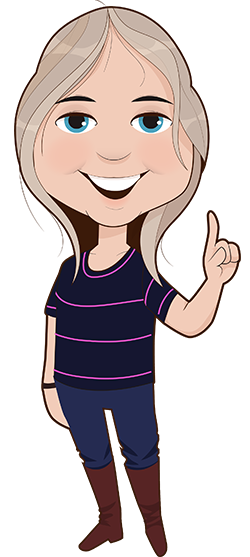With so many designs you can potentially sell in Print on Demand — which ones should you AVOID? Read on to find out…
Watch the video below:
Do you want to learn how to learn how to build a successful, six-figure dropshipping store? CLICK HERE to join The Dropship Club!
Selling the wrong design can get you in a lot of trouble.
I get it though: there’s a gazillion designs out there. How on earth can the average person identify—from face value—which ones to avoid?
Unlike dropshipping, it’s not as easy in Print on Demand to realise what you’re selling can wind you up into a legal problems.
It’s more a blurred line, since in Print on Demand, it’s dead easy to create a design.
It’s important to know beforehand the type of products that can run you into legal issues, or aren’t worth selling because they won’t make you any sales.
In particular, I have discovered five type of Print on Demand designs in particular you need to avoid.
…and in a second, I am going to share all of the five with you.
Don’t spend another minute working with designers without reading this article. Weed out the designs that could lead you into the ‘danger zone,’ so you can move on without worry of future legal issues rising.
(Some of these tips apply to dropshipping too. So if that is how you mainly source products, OR if you run a flex store and do both – you’ll still learn some valuable tips from this too)
#1: Products with Trademarks

Ever heard the famously known phrase “Let’s get ready to rumble”?
Cool phrase, right? Imagine how cool-er it’d be to print it onto a shirt and sell it.
…that’s until you realise the owner of this phrase, Michael Buffer, has it trademarked.
(And just a warning: Buffer has been known to protect his trademark aggressively – it’s netted him over $400 million dollars. So if you use it for product, it IS illegal and you do so at your own peril)
Selling trademarked items are a big no-no. In layman’s terms for those who don’t know, a trademark is a legal protection over something that identifies a brand or a company.
The most classic identifier for a brand or company is their logo. And so the Star Wars logo is protected by a trademark.
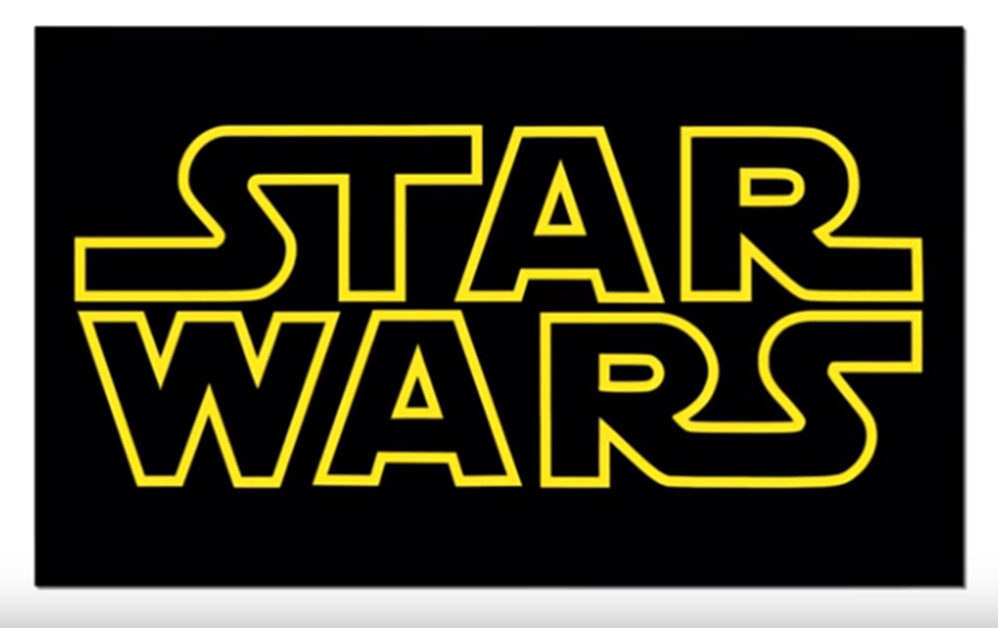
The tricky thing with Trademarks is that they aren’t universal; they have to be filed in each individual country.
This is why, if you are familiar to dropshipping, you might see Chinese suppliers using famous logos. Sometimes they’re breaking the rules, but sometimes, they’re not, as no trademark to protect them has been filed in China. BUT, if it’s filed in any other country you’re selling to, like the USA, it would still be illegal to dropship and sell it THERE, even if it is legal to buy and sell it in China.
Tricky, I know—and this is why if you do wish to piggyback off famous IPs like “I Am Your Father,” you should at least be aware of the potential consequences that come with it.
Likewise, you need to make sure that the phrases you’re using doesn’t also contain a trademarked name within it.
If a character in the movie said “just like Luke Skywalker” you couldn’t quote that phrase and sell that because while the phrase isn’t protected, the name “Luke Skywalker” is.
You should also be careful and DOUBLE CHECK that a phrase ISN’T trademarked before you use it, because sometimes, phrases are trademarked that you wouldn’t have expected.
#2: Unoriginal Designs

Designs like the one above are sooo mainstream.
In fact, I’m so confident you’ve seen this “I Love NY” design at least once in your life, that I don’t even have to ask you. (Which even proves my point!)
Timeworn designs like this are a death blow for Print on Demand. You can’t walk 2 minutes around Manhattan without seeing someone, somewhere, selling one of these t-shirts.

And you might think “Well, since this design is SUPER popular, shouldn’t it sell?” To answer this, I think it’s important you understand the whole purpose behind Print on Demand.
You see… Print on Demand has several advantages, and disadvantages compared to its cousin, dropshipping.
One disadvantages is the profit margins; they are significantly smaller. Why? Because with dropshipping, a manufacturer is mass producing the products it is selling at scale.
On the other hand though, Print on Demand manufacturing costs are higher than usual since you’re making just one at a time. So if you want to print a shirt from Printify, it’s going to cost you $7.73 to $5.95 a shirt.
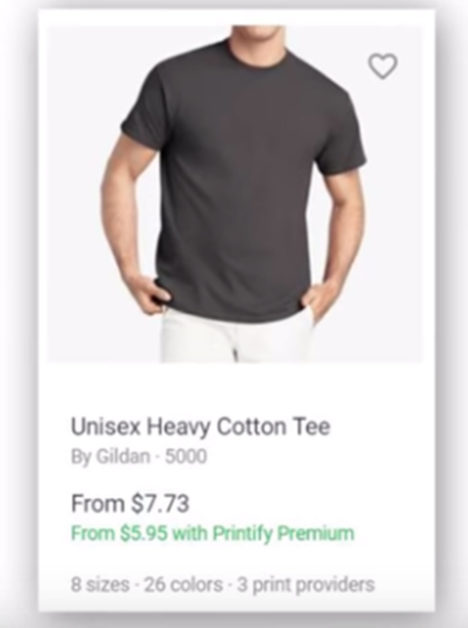
And because the “I Love New York” design is so well-known, even suppliers on sites such as Aliexpress are manufacturing this for dirt cheap, making it easy to buy and access on the internet (let alone the high street!).
So selling a popular shirt design that everyone already knows they can get cheaper elsewhere is not a smart idea unless you have a SUPER unique, special spin on it.
But of course, there are upsides to Print on Demands. One of them being you get to target niche markets that NO ONE ELSE has ever targeted before.
Take this shirt that I’ve shown before on this channel: this pug coffee shirt that is, funnily enough, aimed at people that love both their pugs and coffee.
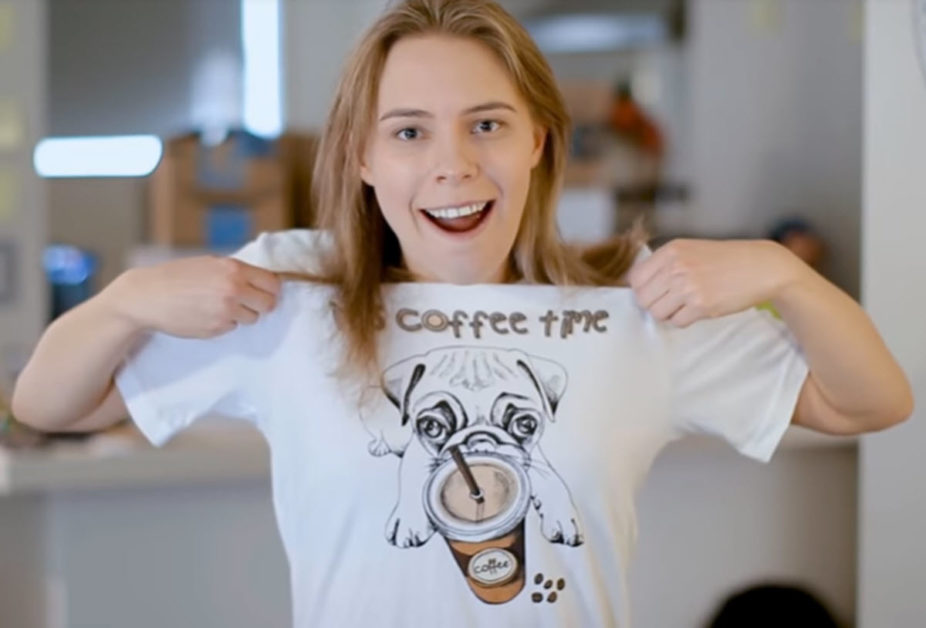
With a shirt like this you’d be targeting a very narrow, unique audience that is passionate yet doesn’t have many options.
And you can make up for the higher manufacturing costs by charging a higher price, like say $14.95 or $19.95, while still keeping your conversions high.
This advantage—creating unique designs for a unique audience—gives you the freedom to price your design at a higher value.
Would it work for the “I Love New York” design though? Of course not! Millions of people that have never even visited New York are familiar with this design; there is no element of surprise or excitement.
If you want to make money with Print on Demand, creating exciting, unique designs targeted at the RIGHT people is biggest deciding factor.
Helpful link: How to make $10,000/month with Print on Demand
#3: Copyrighted Images
This probably is the most obvious one. Most people know that using copyrighted characters is NOT okay.
Though every now and then, I receive a question like: “Sarah, I get that copyright infringement is wrong. But what about fan art? Is fan art OK?”
What they are basically saying is, “Would it be okay to create a design that looks super similar to a character, even though it is not the actual character?”
A good example to articulate what this guy is saying is this modified version of the super llama.
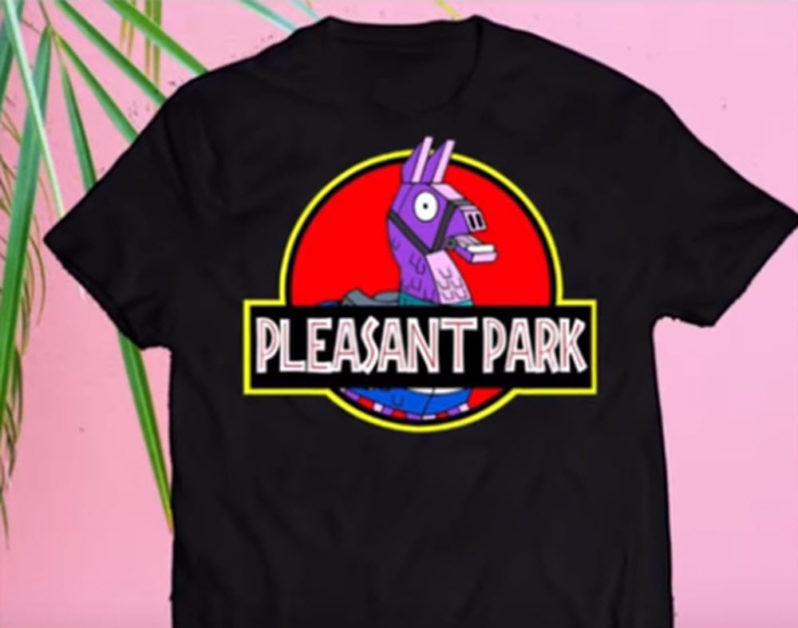
It looks very similar to the actual character in Fortnite. But because it is in a re-created version, it could be considered a new style.
The answer is a resounding NO. It is not okay to use fan art. At least, not legally.
Let’s get this straight: fan art without explicit permission from the copyright holder is ILLEGAL. And believe it or not, this includes free art you post on the internet and don’t even sell.
However, fan art can be a form of free advertising for a lot of brands. And so often brands, like Fortnite, will give permission for brands to make FREE fan art, but NOT allow people to sell it.

So if you try and sell a t-shirt related to Fortnite, it’s won’t last on the internet very long.
There is a slight exception to this rule: Anime. If you walk an anime convention, you’ll inevitably see a LOT of fan art being sold at booths all over the show.
Fan art for Pokémon. Fan art for Death Note. Fan art for One Punch Man… How on earth are people getting away with this?
Well it’s because a lot of Japanese anime companies choose to look the other way when it comes to fans selling artwork. They usually tolerate you selling you selling an original, fan art version of it.
…And the main reason behind this, is that they benefit from the exposure and from encouraging their fanbase, so they let it all slide.
Of course, this is far from a one-size-fits-all rule—and on the whole using copyrighted images for commercial use should be avoided at all cost.
Also keep in mind that while majority of Japanese anime are okay with this, they can at any point have you sued at their will and choose to protect their IP.
Helpful link: How to NOT get sued with dropshipping
#4: Unoriginal Designs on Etsy
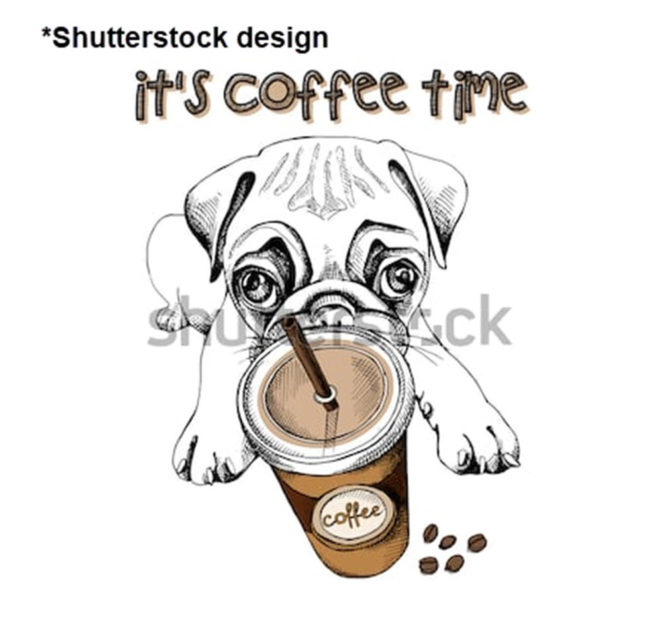
Compared to other marketplaces, Etsy has a unique angle that decides whether or not you are eligible to sell on the platform. Products you sell on the site need to be original and made and designed either by YOU, or someone else who is part of your “team.”
I quoted the word team because some sellers may consider themselves as a “one man show”; they only hire freelance designers to create their designs.
But these designers could be considered part of your “team.” After all, you don’t create your designs, do you?
That is why if you use sites like Upwork to work with designers, as part of your contract, mention that they allow you to be noted down as a “team member” in your Etsy profile, as Etsy requires that each member’s role, including the designer, be identified in your store profile.

It’s also worth mentioning how critically important it is to read the rules of any marketplace before deciding to sell on there.
You wouldn’t play a game if you weren’t certain of the rules and how to play. The same applies to selling on platforms like Etsy, Amazon and eBay; it is essential that you understand the legalities.
This may seem super boring, I know. But what is more painful than reading up on rules? Investing hours, months or even years of your energy into building a business on one of these platforms, only to be suddenly kicked off without warning. That seriously sucks! (And I can testify to this)
Helpful link: How to sell on Etsy: $100 per day using free traffic
#5: Designs without transparent backgrounds

If you saw the image above, it might have seemed to be pretty normal, but it isn’t. The text actually has a black background.
When you print it on a black t-shirt, it’s going to end up with a weird border around it, and the black colour of the shirt won’t match the background colour. It’s going to look dreadful.
For some designs, it’s okay to use designs and images to print with backgrounds if they are part of the design. But stick to printing them on a DIFFERENT coloured shirt, like a white or grey t-shirt instead.
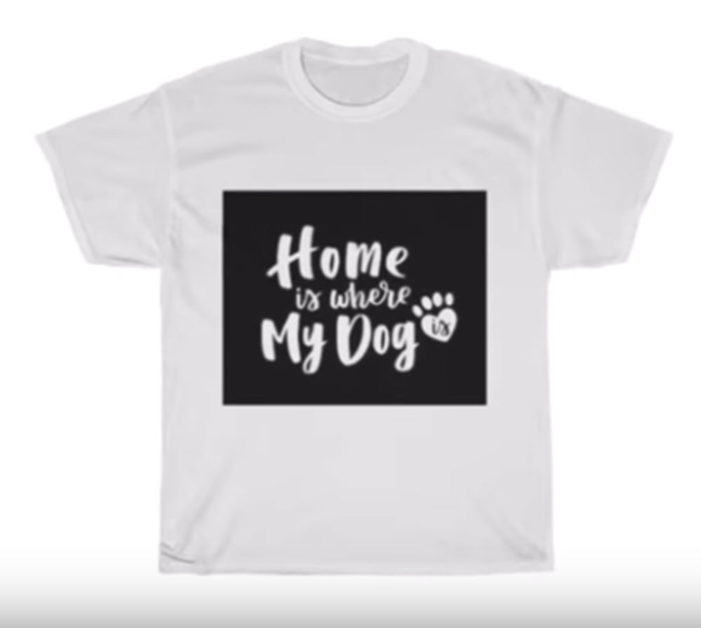
For designs with text on them though, use a transparent background so there is no interference in the contrast of the shades.
Want to learn the blueprint wildly successful dropship stores follow to make six-figures?
6 Steps to Building a Six-Figure Dropshipping Store
In this eBook, I’ve included:
· How just one “winning item” can earn $10k/month. Yep. A lot of people don’t realize this… but most stores make the majority of their money from just a handful of items!
· The right way to choose AliExpress suppliers. Picking the right AliExpress dropshipper is crucial to drastically reduce things like refunds. Learn how to pick the right suppliers.
· Why long shipping times DON’T matter. A lot of people are scared to start Dropshipping because of “long” shipping times. You’ll learn why this doesn’t matter inside.
· Why six-figure stores take ONLY 2 hours a day to manage. You’ll learn how they utilize apps like Oberlo to make their stores semi-automated, making managing orders super simple!

